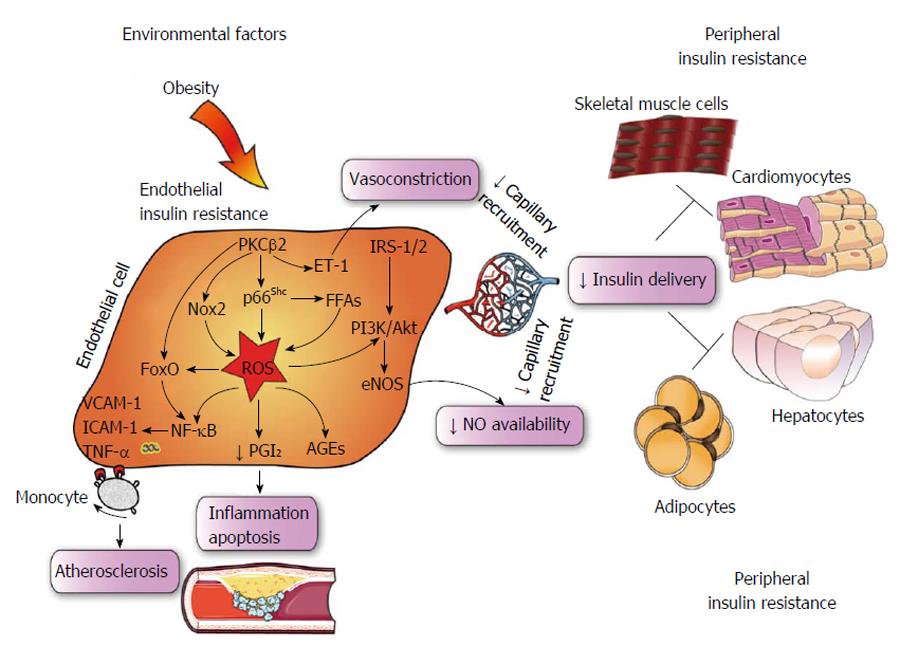Copyright
©The Author(s) 2015.
World J Diabetes. Mar 15, 2015; 6(2): 326-332
Published online Mar 15, 2015. doi: 10.4239/wjd.v6.i2.326
Published online Mar 15, 2015. doi: 10.4239/wjd.v6.i2.326
Figure 1 Association between abdominal obesity and cardiovascular disease.
Subjects in the upper tertile of waist circumference had an increased adjusted relative risk of 29% for cardiovascular (CV) death, 27% for myocardial infarction (MI), and 35% for total mortality, suggesting a strong association between abdominal obesity and CV events. Adapted from Dagenais et al[9]. WC: Waist circumference; CVD: Cardiovascular disease death.
Figure 2 Central role of endothelial insulin resistance.
Schematic representing intricate inflammatory and ROS-sensitive pathways responsible for maladaptive insulin signalling in the vascular endothelium. In obese subjects, environmental stimuli favour progressive impairment of endothelial cell function due to ROS accumulation and reduced NO bioavailability, leading to defective capillary recruitment and hampered insulin delivery to hormone sensitive organs. PKC: Protein kinase C; NF-κB: Nuclear factor kappa-B; IRS; Insulin receptor substrate; ROS; Reactive oxygen species; AGEs; Advanced glycation end products; PGI2; Prostacyclin; VCAM-1; Vascular cell adhesion molecule-1; ICAM-1; Intercellular cell adhesion molecule-1; NO; Nitric oxide; TNF-α: Tumor necrosis factor α; FFA: Free fatty acid; ET-1: Endothelin-1; Nox2: NADPH oxidase 2; FoxO: Forkhead box O; eNOS: Endothelial nitric oxide synthase. NADPH: Nicotinamide adenine dinucleotide phosphate.
- Citation: Paneni F, Costantino S, Cosentino F. Role of oxidative stress in endothelial insulin resistance. World J Diabetes 2015; 6(2): 326-332
- URL: https://www.wjgnet.com/1948-9358/full/v6/i2/326.htm
- DOI: https://dx.doi.org/10.4239/wjd.v6.i2.326










